Spring in Scandinavia Part 2: Denmark
Looking for ideal urban life
It’s officially autumn in my still-strange southern hemisphere home of Queensland which means, naturally, that spring has sprung way back up north. Plants are budding, bugs and birds are back in business, and while the weather here cools (though still stays easily in the twenties), the sun rises higher and warms the northern hemisphere more every day. For me, these shoulder seasons of spring and autumn each come with their own sense of nostalgia, and this year it has me thinking of one place in particular more than any other. Scandinavia.
Denmark is hardly a country renowned for its nature. And truthfully, it isn’t the reason I went. Now, that isn’t to say that Denmark doens’t have great nature and natural heritage. So long as you’re not looking for mountains or fjords, Denmark can be surprising, with this smallest of the Scandinavian nations sporting a long golden coastline, ancient woodlands and a stock of wildlife not dissimilar to that of Britain. For all this, there was still another side of springtime Scandi travel I most wanted to experience in Denmark. Admittedly not something I often actively seek, but I wanted to see what I thought was ideal urban life.
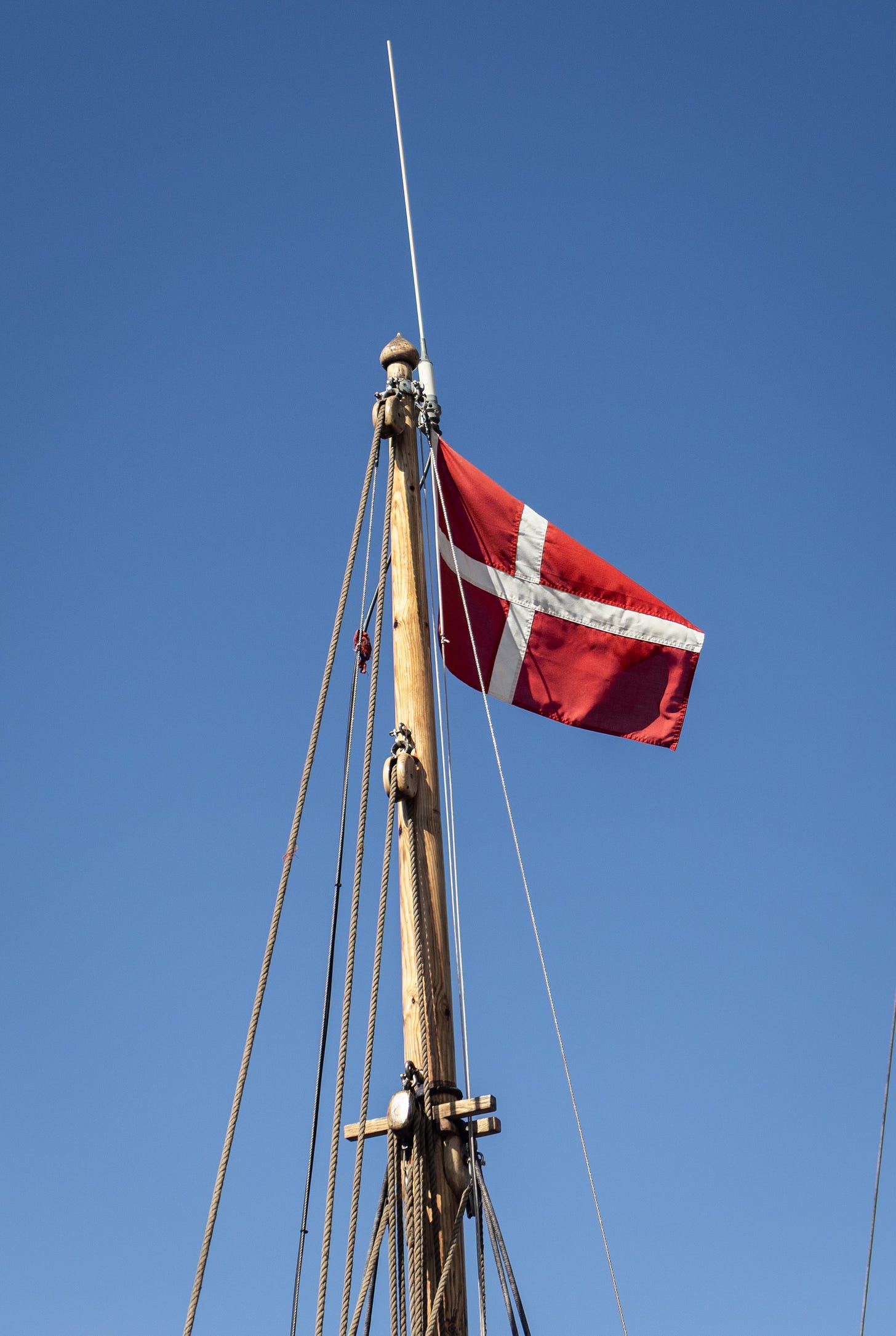
Copenhagen is the world’s 3rd most sustainable city, right in the middle of an all-Nordic top 5 (GDS-Movement, 2025), and it soon became clear just why. Or rather Copenhagen was one of the first cities to make me realise that one of my greatest aversions to the urban landscape is noise. Copenhagen, a city of nearly one-and-a-half million people, is peaceful. A veritable little European oasis on a continent of rowdy capitals.
Of course, I am able to take all this in with the leisurely pace of a traveller; nowhere to be and all the time in the world to get there, but even amongst the commuters I passed as I walked the slow four-or-so kilometres from my hostel (ironically for my urban escape, an indoor campground called Urban Camper) to the city centre in the morning, I saw few with the pained expressions or dead eyes of many urban dawns. And almost all were going by bike. Some could see it as a tree-hugging western European stereotype, but I would take city full of handlebar bells over car horns, and the gentle roll of bikes with baskets over lorries and SUVs any day of the week. Urban life in Denmark’s capital was off to a flyer. A slower pace of life and a quieter morning.
This feeling of peace was compounded when I cut away from the main road to an unlikely detour, one through possibly the least macabre cemetery I have ever seen. Its shaded avenues were chilly in the early morning but the grounds were well-tended, paths well-walked and spaces in between bursting with greenery and an awful lot of life for a cemetery. It’s fitting then, that among the tranquility of this place lay some of Denmark’s most impactful people. And if it’s good enough for the likes of Niels Bohr and Hans Christian Andersen to see out eternity then I must have been in a decent spot.
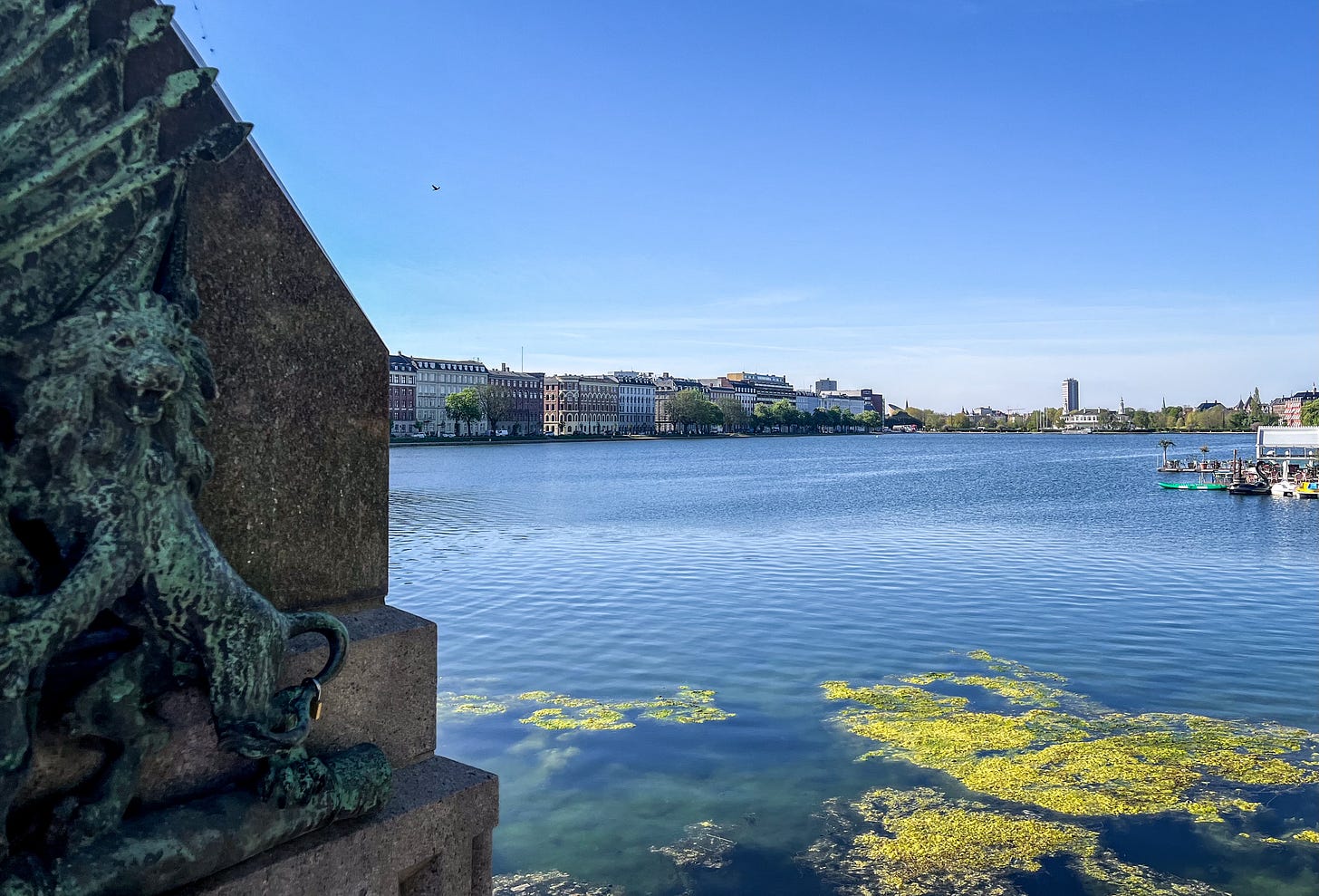
Expecting the area’s voice to change as I closed in on central Copenhagen, even as I reached the city proper, the Indre By, across the artificial lakes, the place didn’t shout about itself, instead it showed itself. The pedestrian shopping streets around Strøget, the squares outside the Christiansborg Palace and sadly burned down Børsen, and even the huge square of Kongens Nytorv were all serene (though the latter would, a day later, be overrun by Silkeborg and Aarhus fans amiably rampaging before the Danish Cup Final).
For the first time since arriving, the Nyhavn told a different story. It’s the spot most people know best of Copenhagen, the tourist-thronged harbour. And while it’s true that it attracts almost every visitor to the city, it’s easy to see why. A placid waterfront of brightly coloured cafes, bars and what I imagine are some of the sweetest townhouses in the world, Nyhavn in the spring sun was about as pretty as I have seen any city be. Bobbing in the water were old, wooden boats, resplendent under the Danish cross. More than pretty enough to distract from the newfound shoulder-to-shoulder traffic, there were few nicer sights to drink in alongside a cold, local Carlsberg at lunchtime.
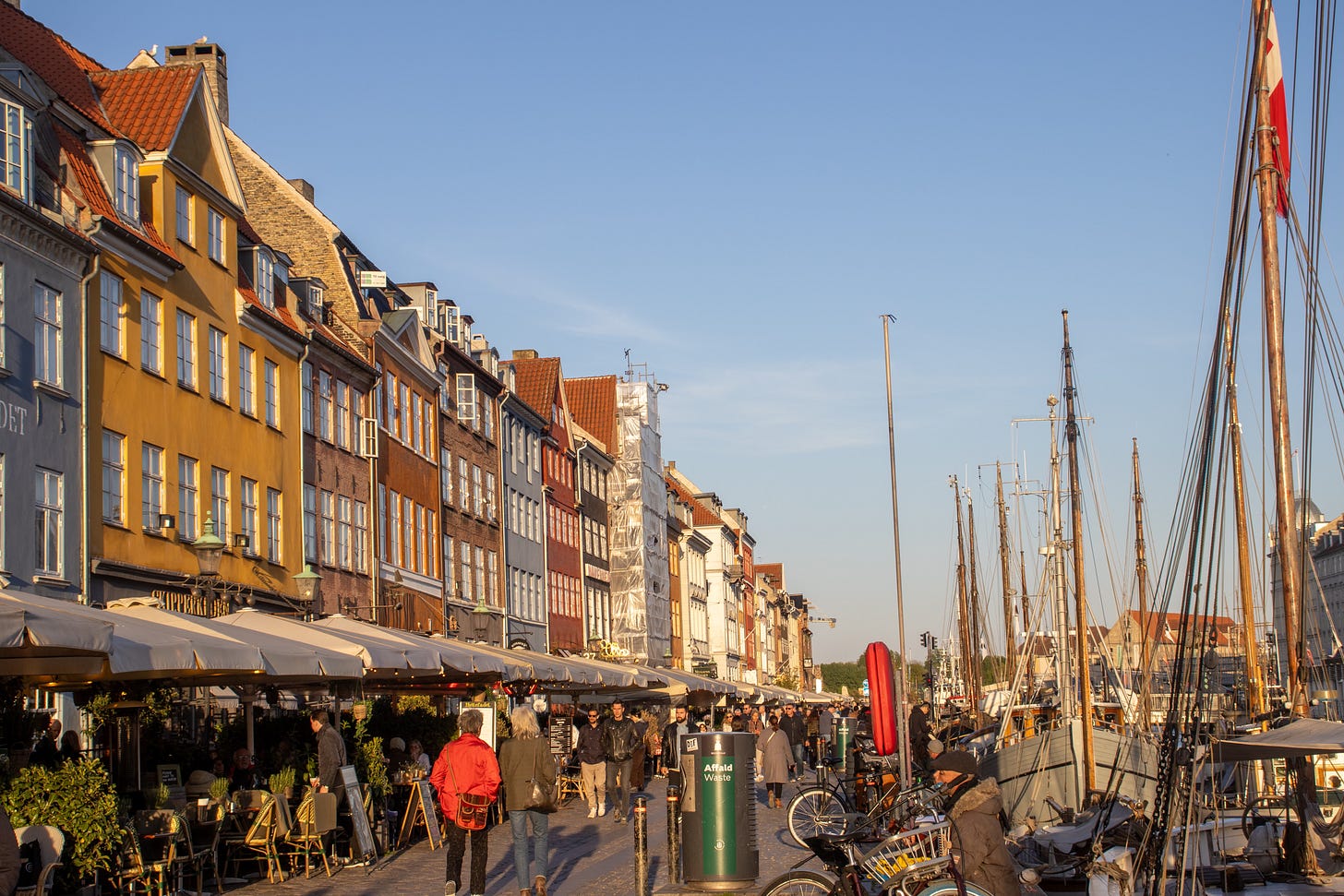
My short trip had started auspiciously and miraculous spring weather would follow me around the city for the remainder of my time. Cool, sunlit, cloudless days led me to Rosenborg Palace, Amalienborg Palace, Frederiks Kirke and Kastellet, and brought to life the miraculously manicured nature of the botanical gardens and the of Tivoli Gardens. The latter, though surrounded by a city centre and filled with electrically excited visitors, still somehow remained calm and collected.
From what I had seen, the stories of urban idealism in Scandinavia were all true, though some of the trappings of a modern tourist hotspot were beginning to seep in. That was until one place in the city showed me that the restlessness of the modern world is not completely lost here.
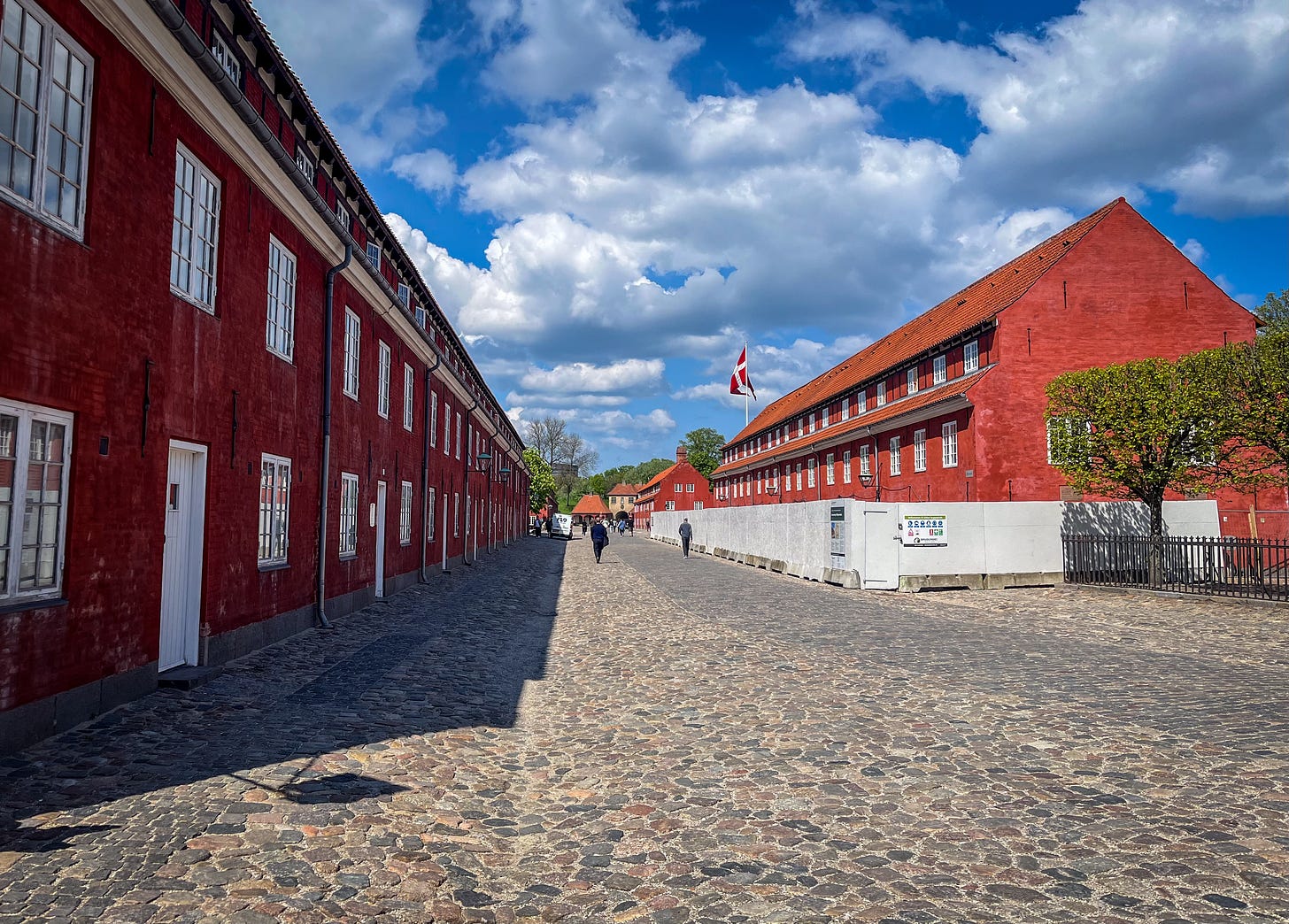
All this order, sensibility, peace and urban harmony comes at a cost. And in 1971, feeling their free life under threat, a group of Copenhageners shifted out to an old military barracks on the fringes of the city, squatted, and founded Freetown Christiania.
Christiania is an odd place. As I walked around I couldn’t help but feel the magnitude of opposition to outside Copenhagen. But then I suppose that’s the whole point. Where Copenhagen is straight, clean roads, Christiania is winding, weed-fringed paths. Where Copenhagen is quiet bicycles, Christiania is loud gig soundchecks. It’s a place that, to me, felt a little past its best. I can imagine that back at its foundation, and in the groundbreaking and earthshaking decades of the seventies, eighties and nineties, this could have been an attractive place. An escape from the rat-race and the uniformity. There seemed though, something superficial to it. But there is fight in the old dog yet. In fact, just a few weeks before I arrived, Christiania retook control of its freedom from gangs that sought to take advantage of a well meaning society. Pusher Street, the commune’s famous open (though still illegal) cannabis market was, quite literally, torn down. Residents with the true ideals of this hippie homestead, and a fair few Danish police officers, ripped the very flags from the ground and brought a little more peace bag to this peace-and-love commune.
It’s this that most of all sticks with me from Christiania. The settlement was created as a complete diversion from the way of normal life here, a place of its own laws, ways and time. But I feel this recent tolerance and collaboration from both sides of this bizarre urban spectrum is the essence of the Danish way. The Scandi way. A place like Christiania could only exist here.
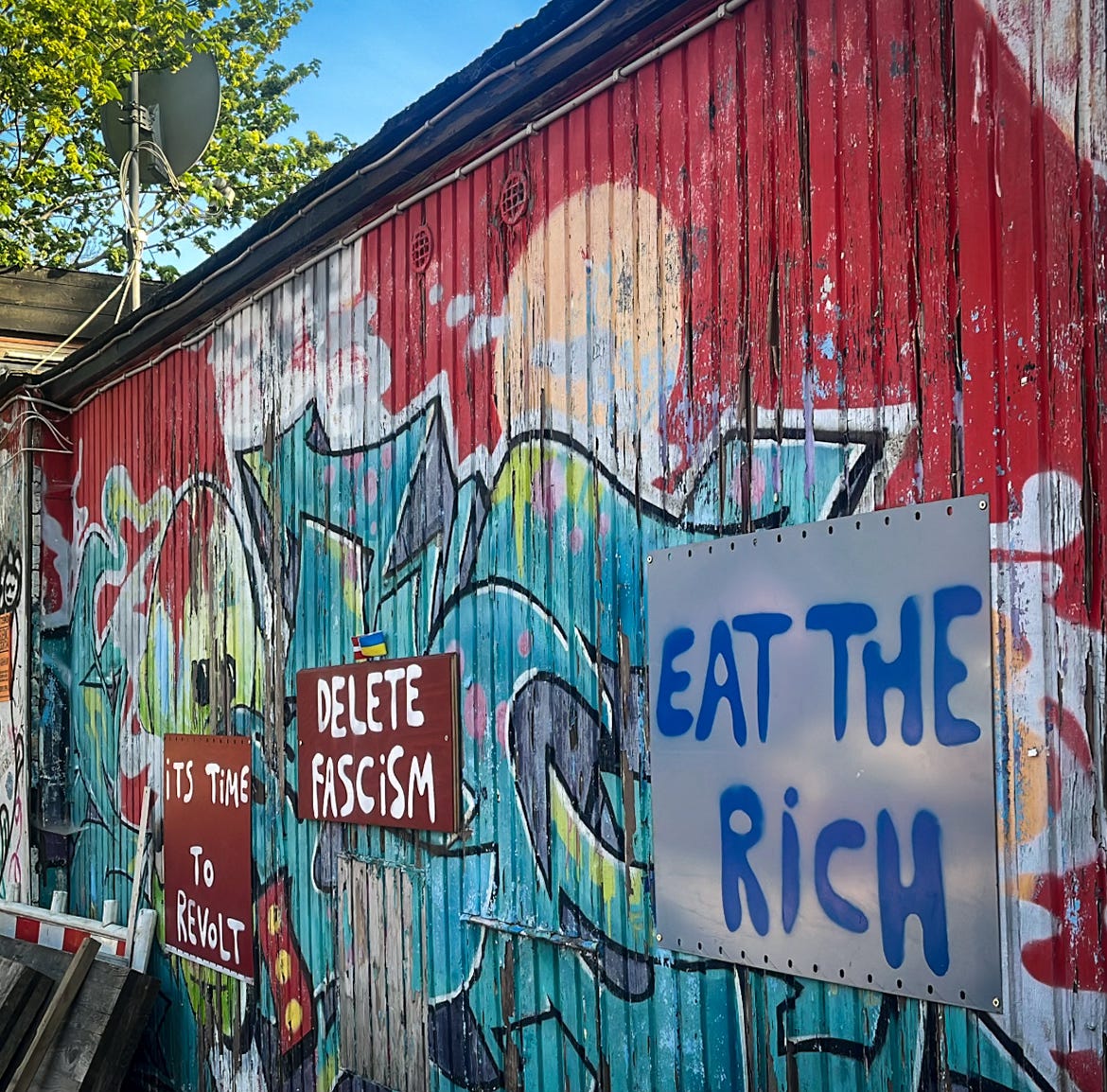
After indulging in the sights and sounds of Copenhagen, it came time to end my trip with a rustling of my other senses. Just across the central lakes once again, a final dip into the city had Copenhagen thoroughly animated at the Torvehallerne market. It’s a modern affair, probably the most newly and neatly designed marketplace I have seen, but its charm is as utterly timeless as the city.
Fresh cakes, pastries and the last of the spring flowers were pressed on all my senses. Thickets of fruit and vegetables, bread, fish and cured meats lined the walkways. It was the kind of place that makes me hate the supermarket, with its flat, clinical lighting and hopelessly neat and characterless shelves, the price we pay to lower the price. With great difficulty I dodged craft beer bottleshops and wine bars only to be arrested by my greatest weakness, and probably the Nordic nations’ greatest treasure of all. Liquorice. A single taste and I was hooked, snapping up a small box of lemon flavoured liquorice allsorts. Astoundingly for a Yorkshireman, I parted with about the equivalent of £9 for the pleasure. But what a pleasure it was.
And as I slowly ate my way through my rationed liquorice over the next days, I could only think what a pleasure Copenhagen was.
Sources
GDS-Movement (2025). Top 40 Cities. [online] Global Destination Sustainability Movement. Available at: https://www.gds.earth/index/top-40-cities/.


